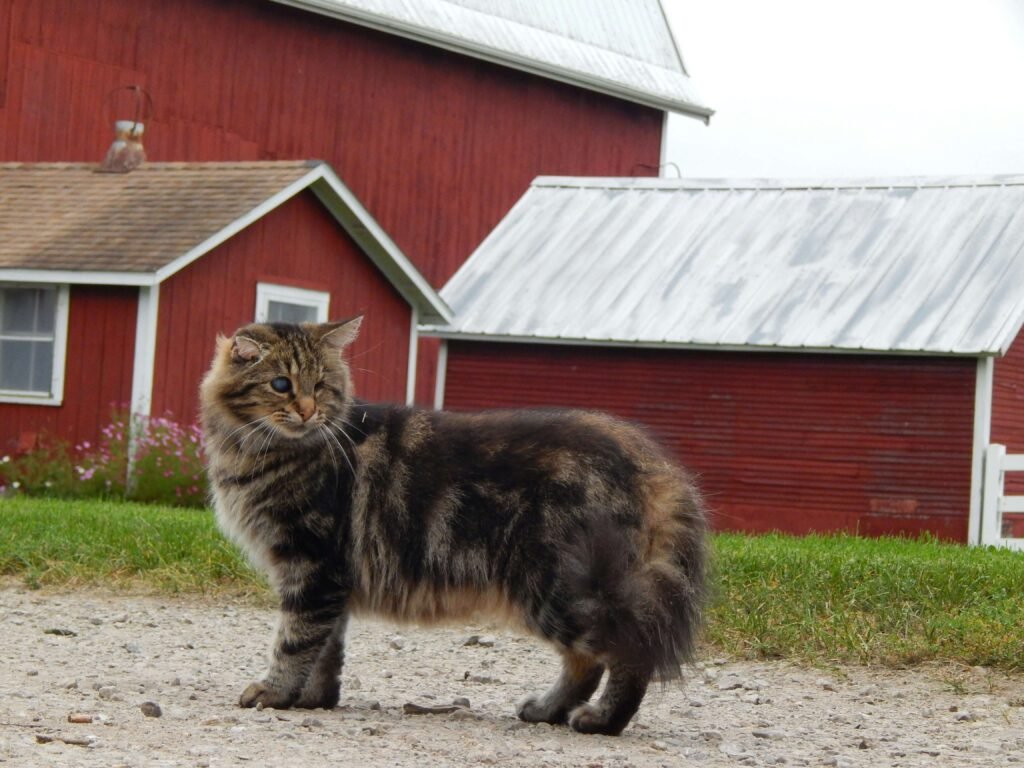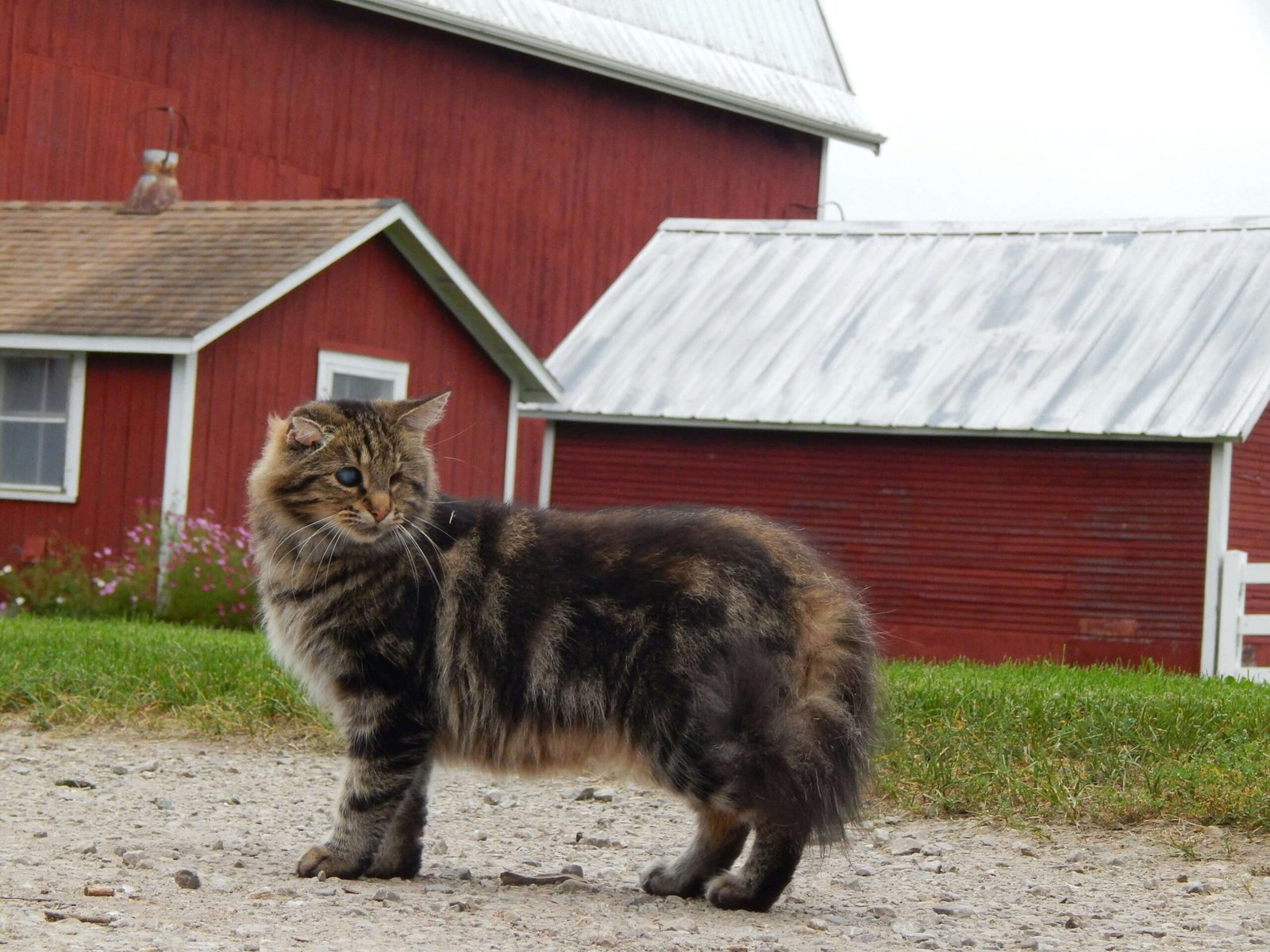Why Is My Cats Tail Swollen at the Base? A Comprehensive Guide
Cats are mysterious creatures, and their body language often speaks louder than words. One day, you might notice something unusual—your cat’s tail looks swollen at the base. This can be alarming for any pet parent, but don’t panic just yet. Understanding the potential causes and knowing when to seek veterinary help can make all the difference. In this blog post, we’ll explore everything you need to know about a swollen tail base in cats, from possible reasons to actionable steps to ensure your feline friend stays healthy and happy.
Common Causes of a Swollen Tail Base
When you notice swelling at the base of your cat’s tail, it’s essential to consider several possible causes. Here’s a breakdown of the most common reasons:
Trauma or Injury
Cats are curious and active animals, which sometimes leads to accidents. A fall, bite, or impact could cause swelling at the tail base.Infection
Bacterial or fungal infections can lead to localized swelling. These infections may occur due to an untreated wound or poor hygiene.Abscess Formation
An abscess is a pocket of pus that forms as a result of infection. It often appears as a soft, swollen area and can be painful for your cat.Tail Gland Hyperplasia
Some cats have overactive tail glands, leading to swelling. This condition is more common in older or overweight cats.Fracture or Dislocation
A broken or dislocated tail bone can cause visible swelling and discomfort.
If you observe any of these symptoms, it’s crucial to monitor your cat closely and consult a veterinarian to determine the exact cause and treatment plan.
Signs That Accompany a Swollen Tail Base
A swollen tail base doesn’t always appear in isolation. Often, other symptoms accompany it, giving you clues about what might be wrong. Here’s what to look out for:
Lethargy
If your cat seems unusually tired or uninterested in activities they normally enjoy, it could indicate pain or illness.Excessive Licking or Chewing
Cats often lick or chew areas that bother them. Persistent grooming of the tail base might signal discomfort.Mobility Issues
Difficulty walking or reluctance to move could suggest a fracture or severe injury.Behavioral Changes
Aggression, hiding, or avoiding interaction might indicate that your cat is in pain.Fever or Warmth Around the Area
A warm or feverish sensation near the swollen area could point to an infection.
Observing these signs alongside a swollen tail base can help you identify the problem more accurately and seek timely veterinary assistance.
Check this guide 👉What Does a Cats Tail Twitching Really Mean? Best 7 Tips!
Check this guide 👉Why Do Cats Chase Their Tails? Best 7 Behavior Tips!
Check this guide 👉Why is My Cats Tail Falling Off? Best 7 Expert Health Tips!

Potential Causes | Symptoms to Watch For |
|---|---|
Trauma or Injury | Visible bruising, limping, or pain |
Infection | Redness, discharge, or foul odor |
Abscess Formation | Soft swelling, warmth, or pus drainage |
Tail Gland Hyperplasia | Oily or greasy fur around the tail base |
Fracture or Dislocation | Swelling, inability to lift the tail |
Steps to Take When You Notice Swelling
If you discover that your cat’s tail is swollen at the base, acting promptly can prevent further complications. Follow these steps to ensure your cat gets the care they need:
Isolate Your Cat Temporarily
Keep your cat away from other pets to avoid additional stress or injury.Examine the Area Gently
Use clean hands to check for wounds, lumps, or abnormalities without causing discomfort.Avoid Self-Treatment
Refrain from applying creams, ointments, or home remedies unless advised by a vet.Monitor Behavior Closely
Keep an eye on your cat’s eating habits, mobility, and overall demeanor for any changes.Schedule a Vet Visit
Contact your veterinarian as soon as possible to discuss the symptoms and arrange an examination.
Taking these steps ensures that your cat receives professional care while minimizing the risk of worsening the condition.
Preventive Measures to Keep Your Cat’s Tail Healthy
Prevention is always better than cure. By adopting certain practices, you can reduce the likelihood of your cat developing a swollen tail base. Consider the following tips:
Regular Grooming
Brush your cat’s fur frequently to prevent matting and maintain cleanliness.Safe Environment
Minimize hazards in your home, such as sharp objects or high surfaces, to reduce the risk of injury.Balanced Diet
Feed your cat a nutritious diet to support their overall health and immune system.Routine Vet Check-Ups
Schedule regular veterinary visits to catch potential issues early.Supervise Outdoor Time
If your cat goes outside, supervise their activities to protect them from fights or accidents.
By implementing these preventive measures, you can help ensure your cat remains healthy and free from tail-related issues.
Understanding Tail Grooming Habits
Cats are meticulous groomers, but sometimes their grooming habits can signal underlying issues. If your cat is excessively focusing on their tail, it might be worth investigating further:
Increased Licking
Excessive licking of the tail base could indicate irritation or discomfort in the area.Bald Patches
If you notice bald spots near the tail, it might suggest overgrooming due to allergies or pain.Chewing or Biting
Aggressive chewing could point to an abscess, wound, or parasite infestation like fleas.Frequent Scratching
Persistent scratching may indicate skin irritation or an allergic reaction.Behavioral Changes During Grooming
Sudden changes in grooming behavior, such as avoiding the tail entirely, might signal pain or mobility issues.
If your cat’s grooming habits seem unusual, it’s important to investigate further and consult a veterinarian to rule out any serious conditions.
Environmental Factors That Impact Tail Health
Your cat’s environment plays a significant role in their overall health, including the condition of their tail. Here are some environmental factors that could contribute to swelling or discomfort:
Exposure to Sharp Objects
Items like broken toys or furniture edges can cause injuries to your cat’s tail.Interaction with Other Pets
Playful or aggressive interactions with other animals may lead to trauma or bites.Unsanitary Living Conditions
A dirty litter box or unkempt living space can increase the risk of infections.Outdoor Hazards
Cats allowed outdoors are more prone to accidents, fights, or exposure to harmful substances.Extreme Temperatures
Cold or hot environments can exacerbate existing health issues, including tail swelling.
By creating a safe and clean environment for your cat, you can minimize risks and promote better tail health.
Dietary Considerations for Tail and Overall Health
A balanced diet is crucial for maintaining your cat’s overall health, including the well-being of their tail. Nutritional deficiencies or imbalances can sometimes manifest in physical symptoms:
Essential Fatty Acids
Omega-3 and omega-6 fatty acids support skin and coat health, reducing the risk of irritation.Protein Intake
High-quality protein is vital for muscle and tissue repair, which is especially important if your cat has an injury.Hydration Levels
Dehydration can lead to dry skin, making your cat more prone to itching and swelling.Vitamin Deficiencies
Lack of vitamins like A, E, or B-complex can weaken your cat’s immune system and skin health.Weight Management
Overweight cats may experience tail gland issues or difficulty grooming, leading to complications.
Ensuring your cat receives a nutrient-rich diet tailored to their needs can help prevent tail-related problems and improve their quality of life.
Frequently Asked Questions About Swollen Cat Tails
Can a swollen tail heal on its own?
It depends on the cause. Minor injuries might resolve naturally, but infections or fractures require veterinary intervention.
Is swelling at the tail base dangerous?
It can be if left untreated. Serious conditions like abscesses or fractures need immediate attention.
How do I know if my cat is in pain?
Look for signs like excessive grooming, aggression, or reluctance to move.
Can I use antibiotics without a vet’s prescription?
No, antibiotics should only be administered under a veterinarian’s guidance.
What should I do if my cat’s tail looks broken?
Avoid touching it and take your cat to the vet immediately for diagnosis and treatment.
Conclusion: Prioritize Your Cat’s Health
A swollen tail base in cats can stem from various causes, ranging from minor injuries to serious medical conditions. As a responsible pet parent, staying vigilant and proactive is key to ensuring your cat’s well-being. By understanding the symptoms, taking preventive measures, and seeking professional help when needed, you can address the issue effectively. Remember, your cat relies on you for their care, so don’t hesitate to reach out to a veterinarian if you notice anything unusual. After all, a healthy cat is a happy cat!
Understanding Cryptosporidium in Cats: Best 7 Expert Tips! – Spot symptoms, treat safely, and stop parasite spread in your home.
Understanding Cryptosporidium in Dogs: Best 7 Expert Tips! – Learn symptoms, treatment & prevention for this stubborn gut parasite.
Understanding Syringomyelia in Cats: Best 7 Expert Tips! – Recognize signs, manage pain, and support your cat’s neurological health with vet-backed guidance.
Understanding Syringomyelia in Dogs: Best 7 Expert Tips! – Expert insights on symptoms, MRI diagnosis, pain management & quality of life.





